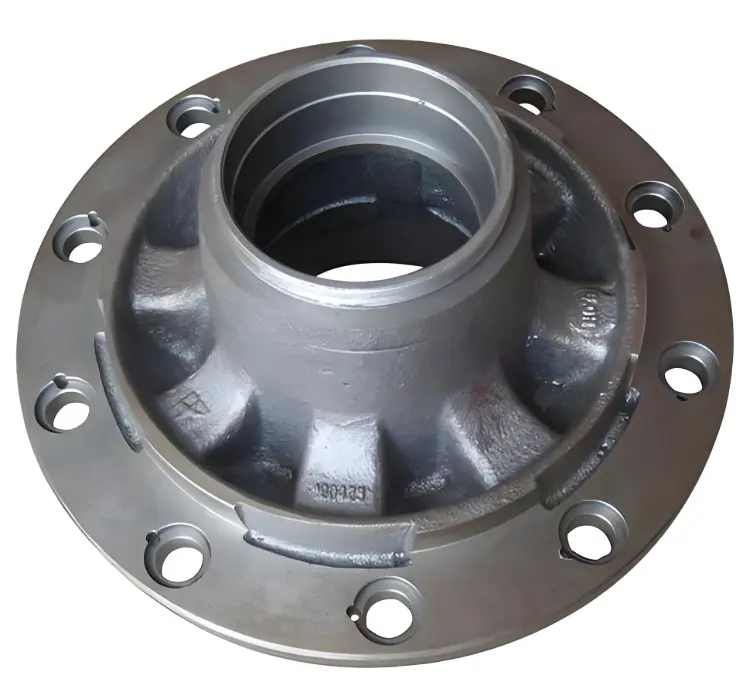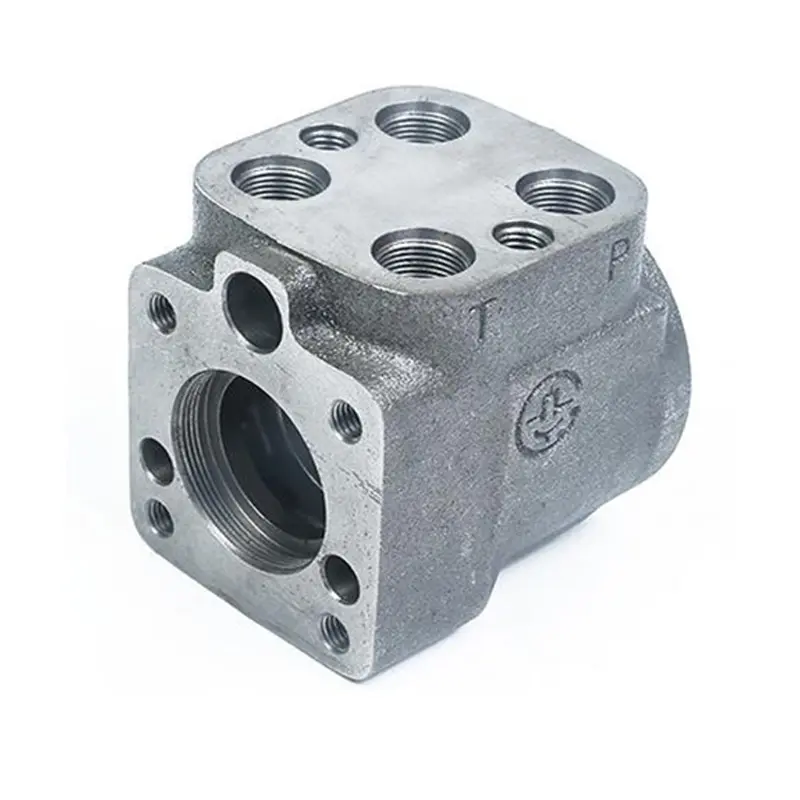Features of static pressure molding line
1. Working principle of static pressure molding line
The working principle of static pressure casting molding line for casting is mainly reflected in the four links of sand adding, air impact pre-compacting, compacting and demolding:
Sand adding: The quantitative sand hopper first adds sand to the sand box, and then moves to the head of the sand adding conveyor belt to load sand. At the same time, the multi-contact pressure head hinged with the quantitative sand hopper moves into the top of the sand box to prepare sufficient molding sand for the subsequent compacting process.
Air impact pre-compacting: The lifting hydraulic cylinder rises to make the template, sand box, auxiliary frame and multi-contact pressure head close to form a sealing system, and then the quick impact valve is opened. The shock wave generated by the compressed air pushes the molding sand toward the template for pre-compacting. The compressed air of the compacted sand mold is discharged through the exhaust plug on the template and the template frame, so that the molding sand is initially compacted and evenly distributed.
Compacting: The multi-contact head compacts the molding sand from the top surface. The multi-contact head pressure is provided by hydraulic pressure and the pressure is fixed, which can make the molding sand reach a higher compactness and uniformity, make the hardness of the mold more uniform, and improve the utilization rate of the mold in the sand box height.
Mold removal: The lifting hydraulic cylinder descends to remove the mold. At the same time, the multi-contact head moves out of the compaction position and drives the quantitative sand bucket into the sand box and the auxiliary frame. The rotary table rotates 180 degrees to switch the upper and lower molds, waiting for the next molding, completing a molding cycle, so as to carry out the next round of sand addition, compaction and other operations.
2. What are the advantages of static pressure molding line compared with other molding lines?
Compared with other common molding lines, the advantages of static pressure molding lines are as follows:
Compared with DISA molding lines
The mold compaction is more uniform: Although DISA molding lines can also achieve good compaction effects, static pressure molding lines use multi-contact compaction combined with airflow pre-compacting, which can make the compaction of the molding sand in various parts of the mold more uniform, and can effectively reduce defects such as pores and sand holes in castings.
Lower noise: DISA molding lines may produce certain noise during operation, while static pressure molding lines have low noise during airflow pre-compacting, and the working environment is quieter.
Compared with shock-pressure molding lines
Less damage to equipment: Shock-pressure molding lines rely on shock and compaction to compact the molding sand, and vibration will cause a greater impact on the equipment, affecting the service life of the equipment; static pressure molding lines have no impact on the equipment due to vibration, and the equipment operation is more stable and the maintenance cost is low.
High mold opening accuracy: Static pressure molding lines generally use devices such as compaction mold opening frames, and the mold opening accuracy is improved. In contrast, the mold opening process of shock-pressure molding lines is affected by factors such as vibration, and the accuracy is relatively low.
Compared with the injection molding line
The sand mold has high strength: the injection molding line uses sand injection and compaction to compact the molding sand, while the static pressure molding line combines multi-contact compaction and airflow pre-compacting to make the sand mold stronger and more uniform, and can withstand higher liquid metal pressure, which is suitable for the production of large and complex castings.
Low sand consumption: The static pressure molding line has good back compaction strength, which can reduce sand consumption compared with some injection molding lines.
3. Conventional production efficiency of static pressure molding line
The number of boxes of sand molds produced per hour by the static pressure molding line varies depending on factors such as equipment model, sand box size, and complexity of castings. The common production efficiency is as follows:
Single-host static pressure molding line: usually 50-120 boxes of sand molds can be produced per hour. Generally speaking, small sand boxes (such as 400×400-500×600mm) and relatively simple molding processes can achieve higher production efficiency, which can be close to 120 boxes/hour; while for larger sand boxes (such as 700×800-1000×1200mm) or when producing complex castings, the production efficiency may be reduced to 20-50 boxes/hour.
Dual-host static pressure molding line: The production capacity is greatly improved compared with the single host. For example, the dual-host high-efficiency static pressure molding line produced by a company in Qingdao can produce 130-150 boxes/hour.
4. What are the disadvantages of static pressure molding line?
Although there are many advantages to using static pressure molding line for casting sand mold production, there are also some disadvantages, which are mainly reflected in the following aspects:
Equipment
Large initial investment: The static pressure molding line includes a variety of complex equipment such as automatic static pressure molding machine, hydraulic system, electronic control system, etc., with high procurement, installation and commissioning costs, and it is also necessary to equip with a matching sand processing system, etc. The overall investment scale is large, which may cause financial pressure for small and medium-sized enterprises.
Complex equipment maintenance: The equipment involves multiple systems such as hydraulics, pneumatics, and electrical systems, and has a complex structure. It is difficult to troubleshoot and repair after a fault occurs. It requires professional technicians and special maintenance equipment and tools, and the maintenance cost is high.
Process
High requirements for molding sand: In order to ensure the quality of molding, strict requirements are placed on the performance indicators of molding sand such as particle size, humidity, and air permeability. The composition and performance of molding sand need to be precisely controlled, which increases the difficulty and cost of molding sand preparation and management.
Limited molding flexibility: Although it can adapt to castings of a certain degree of complexity, for some castings with particularly complex structures and special molding requirements, it may be difficult to directly achieve it through static pressure molding, and other molding methods or additional manual operations are required.
Long production preparation time: When replacing sand boxes and molds of different specifications or shapes, it takes a long time to adjust the equipment and set parameters. The production preparation time is long, which is not conducive to the rapid switching of small batches and multiple varieties.
Cost
High energy consumption: During the working process, airflow pre-compacting and hydraulic compaction require a large amount of compressed air and electricity, and the energy consumption cost during operation is high.
High land cost: The static pressure molding line has many equipments and long processes, which requires a larger production space for layout, and the cost of factory construction and leasing is high.








